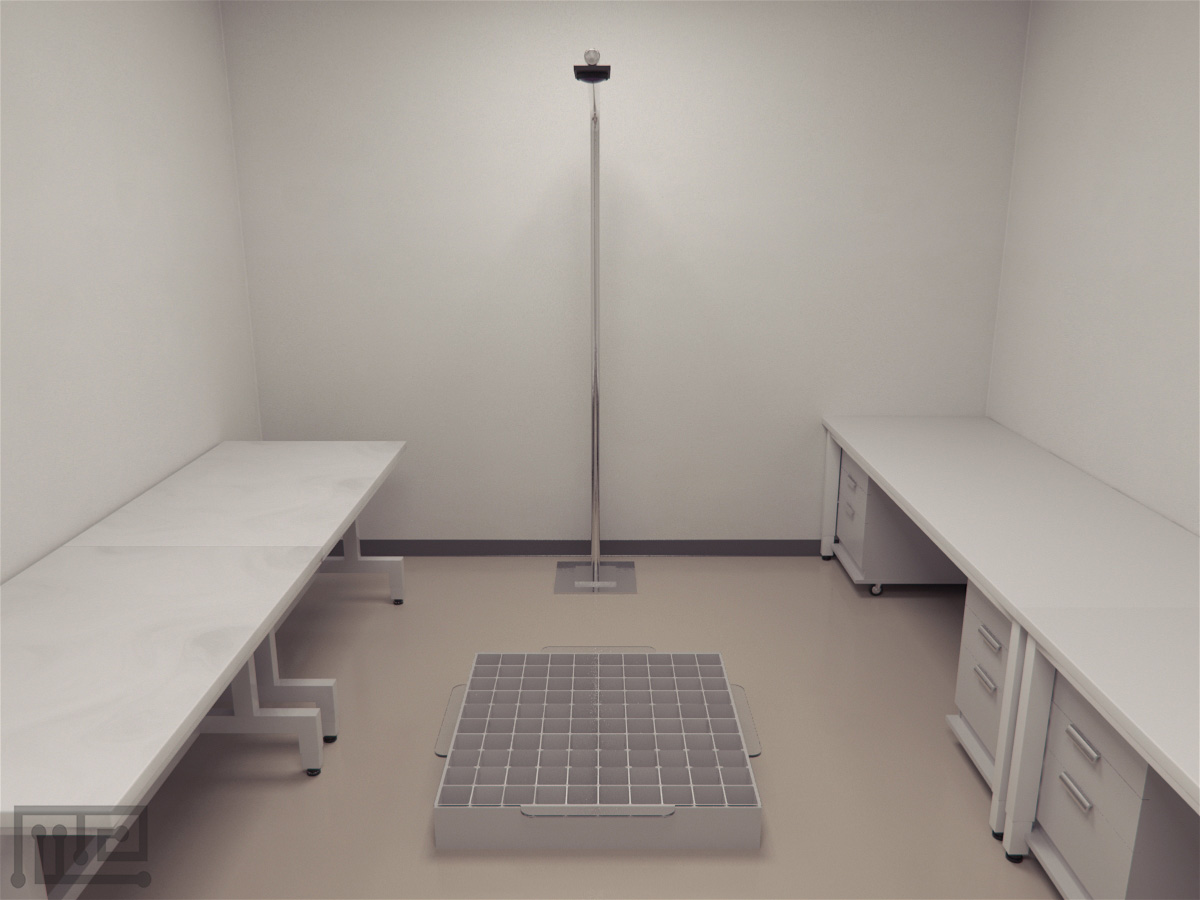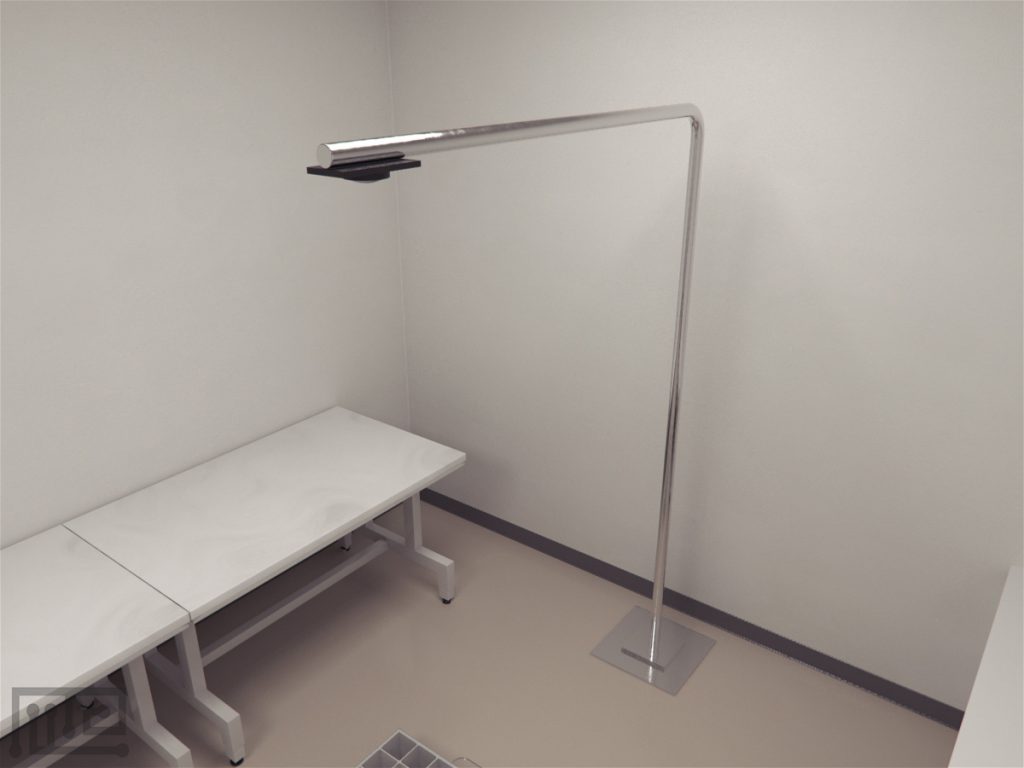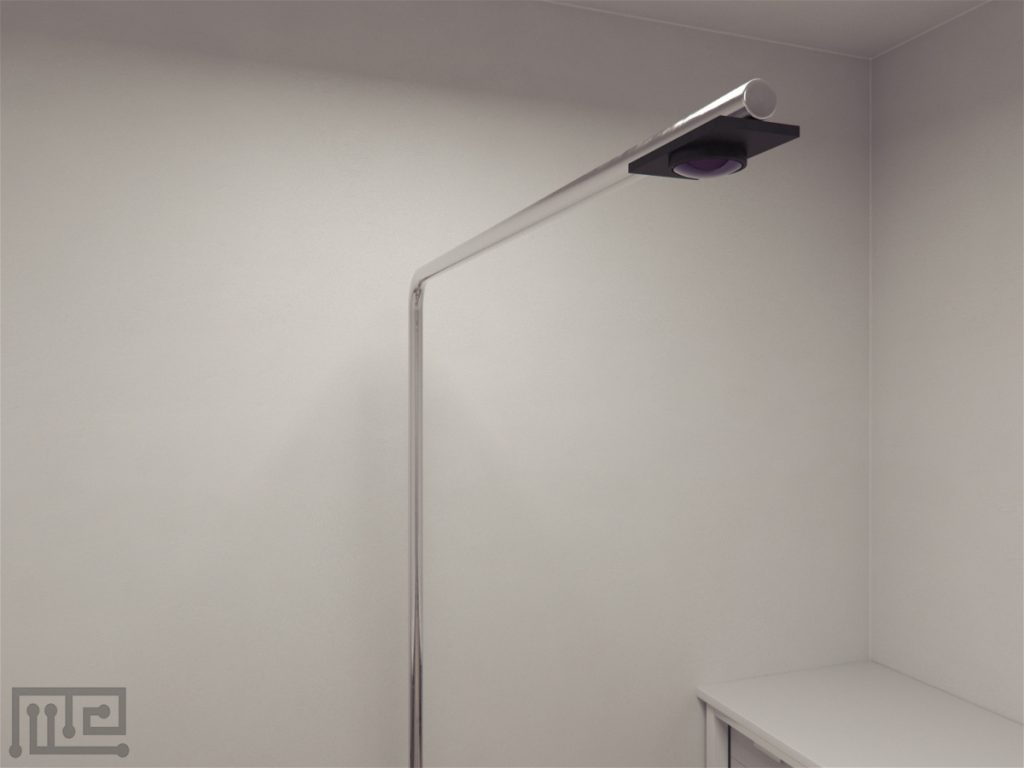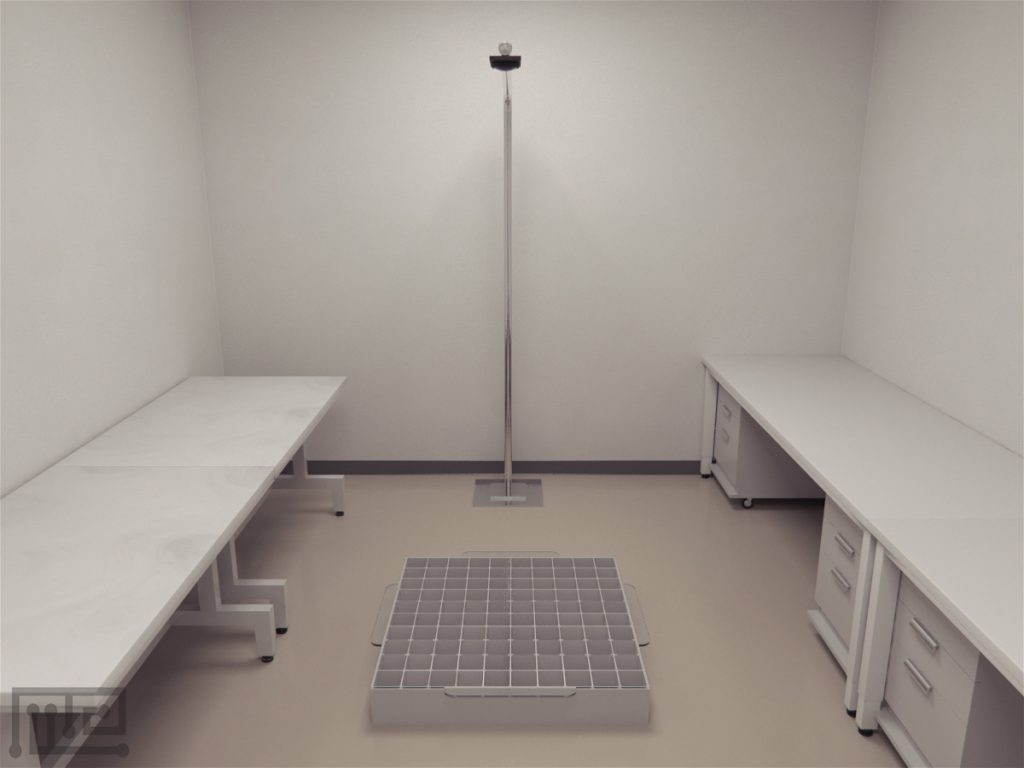The birds-eye camera is used to monitor the movement and position of subjects in experiments. It can be mounted over a maze to capture an overall view of the maze and the activities taking place in it.
The birds-eye camera is mounted on the tail of the horizontal arm of an L-shaped steel tripod. The tripod measures 2.4 meters in height and the horizontal arm measures 1.6 meters in length.
MazeEngineers offers the Birds-eye camera.
Price & Dimensions
Mouse
$ 1690
+S&H- Tripod’s Height: 2.4 m
- Horizontal Arm Length: 1.6 m
Rat
$ 1790
+S&H- Tripod’s Height: 3.15m
- Horizontal Arm Length: 2.1 m
Documentation
Introduction
The birds-eye camera is used to monitor the movement and position of subjects in experiments. It is mounted on the tail of the horizontal arm of an L-shaped steel tripod that is 2.4 meters in height. It can easily be used to capture the overall view of different mazes or testing apparatuses for different experimental protocols.
A study by Wu et al. (2014) used the birds-eye camera to capture the subject’s movements in a maze navigation task. The birds-eye camera was connected to a computer to produce stimulation parameters, which helped guide the subject in the maze.
The birds-eye camera can be used along with Noldus EthoVision XT, which is a tracking and recording software system to not only monitor the subject’s movements and position but also to track and analyze other behaviors such as grooming, rearing, and eating.
Apparatus and Equipment
The birds-eye camera is mounted on the tail of the horizontal arm of an L-shaped steel tripod. The tripod measures 2.4 meters in height and the horizontal arm measures 1.6 meters in length.
Training Protocol
The following is a sample protocol used to evaluate maze learning behaviors in rodents using the birds-eye camera.
Habituation and Pre-training
Place the subject in the starting position of the maze used for the behavioral tasks. Allow the subject to explore the maze and claim the reward. Remove the subject from the maze and conduct another trial. Conduct trials until the subject navigates along the correct path of the maze for three consecutive trials for five days.
Birds-eye Camera Task
Change the configuration of the maze. Place the birds-eye camera just above the center of the maze to capture the overall view. Place the subject in the starting position of the maze. Allow the subject to explore the maze and claim the reward. Conduct trials until the subject meets the required learning criteria.
Data Analysis
The following can be observed using the birds-eye camera:
- Movement of the subject in the maze
- Position of the subject in the maze
Literature Review
Investigation of the ability of a hybrid brain-computer system to learn a maze learning task
Wu et al. (2014) investigated the ability of a hybrid brain-machine system to learn a maze navigation task. Twelve adult Sprague-Dawley rats (6 experimental and six control) were used in the experiment. The rats were implanted with electrodes at their bilateral medial forebrain bundles (MFB) to turn them into ratbots. While performing a maze navigation task, the ratbots carried a backpack stimulator that provided electric stimuli to their brains. The stimulation parameters were generated and transferred wirelessly by a computer, and their movements and position were observed and recorded through a birds-eye camera or a backpack camera. The rats from the control group received the electrode implantation but without any computing device. The maze consisted of 10 x 10 units and included four removable surrounding walls for each unit, which allowed the configurations of the maze to be changed. The experiment investigated three kinds of rule operations conducted by the computer into the hybrid system: the incremental reward rule, the landmark following rule, and a combination of the two rules. In the incremental reward rule, the bird’s eye camera tracked the position and movement of the subject as they navigated the maze. The ratbot’s ability to construct a digital spatial map and reward map was tested. The results indicated that the control group learned to navigate the maze much slower than the experimental group. In the landmark following phase, the birds-eye camera was replaced by a wireless head-mounted mini camera, and landmarks were placed in the maze, which indicated the correct direction to navigate. The results indicated that the experimental group outperformed the control group. In task 3, the experimental group continued to outperform the control group and displayed faster learning of the maze navigation task.
Strengths and Limitations
Strengths
The birds-eye camera can be used to monitor the movements and position of the subjects in different mazes and experimental apparatuses. It is attached to the end of the horizontal arm of an L-shaped tripod, which makes it easy to move around and placed to get the overall view of the apparatus. It can easily be connected to a computer to further analyze the subjects’ movements and behaviors through different software programs. It can be used to monitor the subject’s movements for different experimental protocols.
Limitations
The birds-eye camera may not be able to capture the overall view for very large mazes. The tripod that comes along with the birds-eye camera is non-adjustable, so it can only capture videos from a specific height.
Summary
- The birds-eye camera is used to observe the subject’s movements and position in experiments.
- It can be used to capture the overall view of the experimental apparatus to observe the subject’s behaviors and activities.
- It can be connected to a computer and used along with other software applications to analyze the subject’s movements and behaviors further.
References
- Wu, Z., Zheng, N., Zhang, S., Zheng, X., Gao, L., & Su, L. (2016). Maze learning by a hybrid brain-computer system. Scientific reports, 6, 31746. https://doi.org/10.1038/srep31746
Request a quote
"*" indicates required fields




